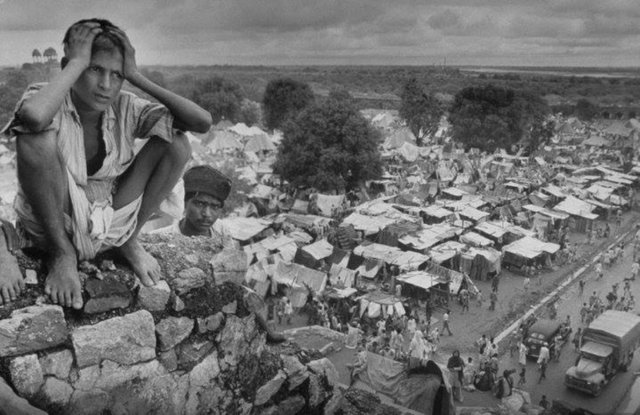August 15th, 1947, inaugurated one of the cruelest and most enduring ironies of decolonization. India, a British property with over 4,500 years of civilization and a population of 415 million, finally achieved independence. But it was a triumph that opened a social, historical and geographic wound that has yet to fully heal: the new Indian state was partitioned into two.
Violent divisions between the subcontinent's Hindu and Muslim communities, and Muslim League leader Mohammed Ali Jinnah's longstanding campaign for an Indian-Muslim political entity in the event of a British withdrawal, made partition the expedient choice for a weary and overextended post-war British government. On June 3rd, 1947, British Viceroy Lord Louis Mountbatten announced that, as of August 15, India would be split between separate majority-Hindu and majority-Muslim countries.
The border between the future modern states of India and Pakistan was created under the supervision of Sir Cyril Radcliffe, a London barrister who was given only five weeks to draw the new borders. The resulting armed conflict persists today, from Hindu-ruled yet majority-Muslim Kashmir, to the bifurcation of Pakistan into remote eastern and western haves that later waged war. Millions of Pakistani Bengalis lost access to Kolkata, a regional metropolis that now sits on the Indian side of the border. As political scientist Lucy Chester recounts, the Radcilffe Line was "a failure in terms of boundary-making, but a striking success in terms of providing political cover to all sides."
India was independent, India's Muslim minority had its own independent state, and the British were in a position to leave their troublesome colonies behind. They were incomplete victories: up to 17 million people were eventually displaced, and 1 million killed, in the sectarian violence that followed partition. Mohandas Gandhi, the leader of India's independence movement, was assassinated by a Hindu nationalist in January 1948 over his perceived sympathies toward India's Muslims. A devastating civil war in East Pakistan resulted in the creation of Bangladesh in 1972. India and Pakistan fought wars over Kashmir in 1947, 1965, and 1999. The Kashmir conflict still serves as an ostensible justification for Pakistan's support of anti-Indian terrorist groups -- as well as for both countries' development of nuclear weapons.
TO LEARN MORE ABOUT HISTORICAL EVENTS IN the 1940s VISIT History0x

Hello @sroka87, thank you for sharing this creative work! We just stopped by to say that you've been upvoted by the @creativecrypto magazine. The Creative Crypto is all about art on the blockchain and learning from creatives like you. Looking forward to crossing paths again soon. Steem on!
Downvoting a post can decrease pending rewards and make it less visible. Common reasons:
Submit